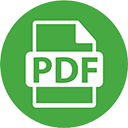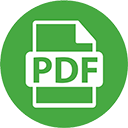06 Healthy Community
Highlights:
1. Communicable Diseases

Pathogen
- Bacteria, Virus, Parasites, Fungi
- Transmissibility, Pathogenicity, Virulence
Transmission
- Direct vs indirect contacts
- Through: droplets, inhalation, ingestion, blood / body fluid
Lifestyle changes
- Increased international trades and travel due to globalization
Reading:
Application:
Coming Soon
Assessment Task:
(password protected)
2. Immune System
Non-Specific defence

First line – physical barriers such as intact skin
and hair in nasal passage; chemical barriers such
as tears and saliva

Second line – inflammatory response (affected
area red, swollen, and warm)
Specific defence

Third line – immune response
Vaccination

3. Non- Communicable Diseases
Examples
- Diseases – Cancer, cardio-vascular diseases, heart diseases, diabetes mellitus
- Related health problems – strokes, obesity and hypertension
Lifestyle
- Sedentary lifestyles, unhealthy dietary practice, smoking, alcohol consumption
4. Disease Prevention
Levels
- Primary
- Aim : avoiding the development of a disease or injury
- Examples : health education and vaccinations
- Secondary
- Aim : early detection of diseases, thereby increasing opportunities for intervention to prevent the progression of the disease
- Examples : health check-ups (such as pre-marital check-up, antenatal check-up) and disease screening (such as colorectal cancer screening)
- Tertiary
- Aim : proper rehabilitation of patients with an established disease to minimize residual disabilities and complications
- Examples : rehabilitation service
Government strategies
- Policy making
- Example: tobacco control policy, food labelling and safety
- Diseases prevention and surveillance
- Centre for Health Protection – keeps the community abreast of health risks through the issue of alerts and tracks changes in the risk profile and health determinants of the population
- Control of the disease spreading
- Real time surveillance
- Rapid intervention
- Responsive risk communication
- Public health promotion
- Territory-wide health promotion programmes such as “healthy eating”, “active living”
- Resources management
- Mobilising resources and providing support for non-governmental organisations in health promotion and disease prevention
Reading:
Application:
Tasks & Worksheets
Coming Soon
Assessing my learning
- What are the relationships between lifesyles and communicable and non-communicable diseases?
- What is disease prevention?
- How could disasese prevention be implemented at individual, society and global levels?





